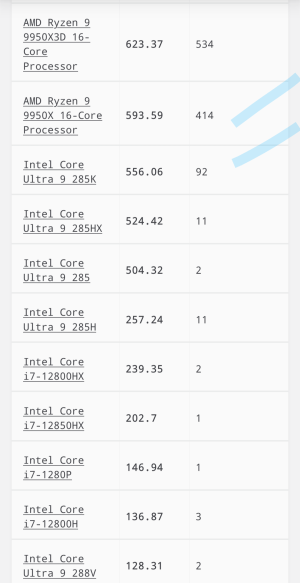I don't know much about Geekbench
Even so, in the case of ARM, the score is increased with SME...
After all, SPEC2017 is the best in this case
How is SME bumping ARM scores any different than AVX2 / AVX512 which bump up x86 scores?
I agree SPEC is preferable, but Geekbench isn't designed to measure the same things as SPEC, because it gives out binaries while SPEC gives out source.
SPEC is partially a compiler test since everyone starts with the same source code and it is up to the compiler to produce optimal code for your architecture. That's led to some cheating in the past from Sun and Intel (and I'm sure others) gaming their own compiler to "break" certain SPEC tests. There are also some shady things like using special heap libraries etc. But cheating aside if the compiler is smart enough to figure out how to translate the source code into AVX512 or SME instructions then the results will show the benefit. I tend to only consider results made using an open source compiler like gcc or clang/llvm with all benchmarks compiled using the same flags and no special libraries used.
So when Geekbench adds direct support for something like when they added SME last year or when they added AVX512 support in the past that will "unfairly" boost the results of CPUs that have that capability. But real world applications will use hand coded assembly for SIMD type stuff so in that aspect this a bit more real world than SPEC.
Each have their advantages, and shortcomings. Pick your poison. I will say I mainly look at the results of the compiler subtest in both SPEC and GB6, because it is impossible to game, and is "pure" integer code that doesn't benefit much from SIMD. If you care about the SIMD results there are SIMD heavy benchmarks you can look at, ditto for FP.




